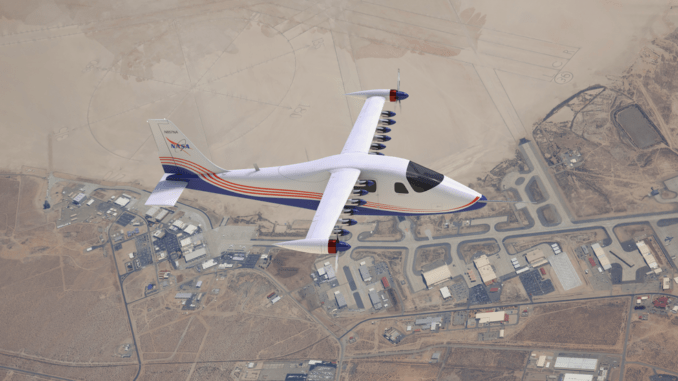
Electric Mobility is developing to another level with the introduction of electric airplanes. Car manufacturers already started manufacturing electric cars and they are slowly capturing the automotive market.
Electric aircraft is another area where the electrification can be applied.
NASA Electric Airplane – Maxwell X-57
NASA had been researching ideas that could lead to the development of electric propulsion powered aircraft since while ago.
The electric aircraft could be much quieter, efficient, and environmental friendly.
NASA’s Scalable Convergent Electric Propulsion Technology and Operations Research (SCEPTOR) develops X-57 Maxwell Electric Propulsion Airplane.
NASA planned to convert the Italian Aircraft Tecnam into the first manned X-plane to feature a distributed electric propulsion system.
Later on they had completed the ground testing on their first all-electric airplane, the X-57 Maxwell.
It successfully demonstrated the aircraft’s ability to transmit its telemetry signal, allowing the team the capability to track mission-critical data during flight.
They had received the data on the ground during X-57’s flight tests, where it will be monitored in real-time by the project team during flight operations.
The data will be recorded for post-flight analysis to measure X-57’s success in meeting its objectives.
It would be helpful for NASA since it seeks to help set certification standards for future electric aircraft.
NASA confirmed that the completion of this round of tests, which took place at NASA’s Armstrong Flight Research Center in Edwards, California, marked continued progress on X-57’s functional ground testing phase – a necessary step toward taxi and flight tests.
Telemetry testing was conducted by establishing a Radio Frequency (RF) link between the aircraft and the downlink equipment of a NASA telemetry van.

The X-57’s two antennas, a top and a bottom antenna were tested together first in the flight configuration, and then each antenna individually.
The transmitter was operated by an avionics technician in the electric airplane cockpit, based on instructions from the test conductor.
The instrumentation engineer and telemetry technician monitored the downlink signal in the van and was able to confirm that the data messages were being received as expected.
Among the data monitored throughout the tests, the X-57 team specifically looked at RF power.
This measurement allowed engineers to observe the signal strength of the overall transmission.
The team also looked at the bandwidth and center frequency of the signal pattern, to determine if the system is operating within the bounds of the allocated frequency range.
The testing indicated no major anomalies in the X-plane’s ability to transmit data.
Latest modification – Mod IV
In Modification IV, NASA has the X-plane in its all-electric configuration.
Each wingtip of the aircraft has a large electric motor. In addition to that, they have added 12 smaller high lift motors and propellers on the wings to make capable of taking off at standard speeds.
These 12 motors located across the wing help out to increase airflow so that the wing produces lift even when the aircraft is flying slowly.
These motors can activate during take-off and deactivate during cruise mode. The blades of the propellers powered by these motors will be folded during the cruise to reduce the drag.
Conclusion
Electric aircraft present a wide array of potential benefits to aviation, including increased efficiency, reduced or eliminated in-flight carbon emissions, and flight that is quieter for communities on the ground.
NASA expects that the X-57 electric airplane will help set certification standards as these electric aircraft markets begin to emerge.
Stay tuned for more updates!!
Don’t forget to share the post with your friends and follow us on Facebook, LinkedIn, Twitter, Instagram, and YouTube
Key points
- NASA manufactures all-electric airplane
- Maxwell X-57
- It uses 12 small motors on the wing along with 2 big motors
